#nanoparticles
Text
⚰️🌭🧛🏿♂️
#zombie world#junk food#deadly food encounters#warning#what you put in your body matters#health hazards#know what’s in your food#danger#be ware#bad food#nanoparticles#transhumanism#AI invasion curtesy of your local fast food chain#truth heals#truth bombs#crimes against humanity#speaktruth#fight for justice#standup#speak up#truth#please share#wwg1wga
360 notes
·
View notes
Text

Engineered MgO nanoparticles: A promising path to synergistic cartilage and bone therapy
In a recent study published in Science Advances, researchers from Nanjing Drum Tower Hospital and others have unveiled a promising approach for treating osteoarthritis (OA) using engineered magnesium oxide (MgO) nanoparticles.
Osteoarthritis, a widespread joint disorder affecting millions globally, has long lacked efficient and cost-effective therapeutic solutions. The new method involves targeted regulation of magnesium ions (Mg2+) to address both bone and cartilage issues associated with OA synergistically.
This innovation not only demonstrates the potential of magnesium in halting cartilage damage but also showcases the effectiveness of MgO nanoparticles encapsulated in microspheres for sustained release, providing a more convenient and durable treatment option.
Read more.
#Materials Science#Science#Nanoparticles#Medical technology#Magnesium#Magnesium oxide#Oxides#Nanotechnology#Nanjing University
21 notes
·
View notes
Text

[Nanoparticles.]
13 notes
·
View notes
Text

Killer Particles
Nanoparticles engineered to induce death of cancer cells by activating an immune response
Read the published article here
Image from work by Zhanzhan Zhang and Zheng Pan, and colleagues
College of Chemistry, Key Laboratory of Functional Polymer Materials (Ministry of Education), Nankai University, Tianjin, China
Image originally published with a Creative Commons Attribution 4.0 International (CC BY 4.0)
Published in Science Advances, February 2024
You can also follow BPoD on Instagram, Twitter and Facebook
11 notes
·
View notes
Text
It's really appealing to be able to control particle shape, because that changes many of the properties. This is the synthesis that almost everyone uses. It’s been used for 20 years, and for that whole period of time, these seeds were simply described as ‘particles.
#nanotechnology#materialsscience#advancedmaterials#nanoparticles#chemistry#engineering#scienceandtechnology
9 notes
·
View notes
Text
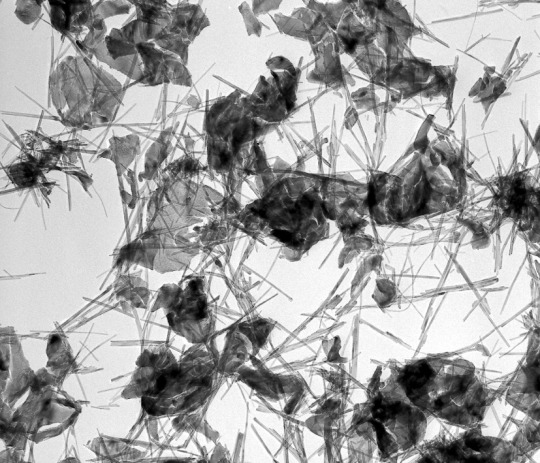

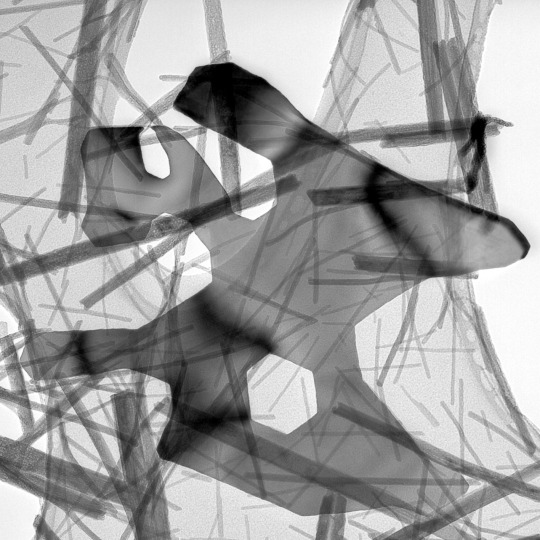
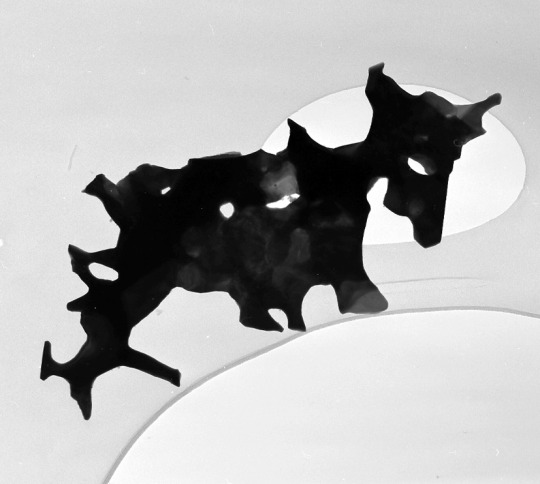

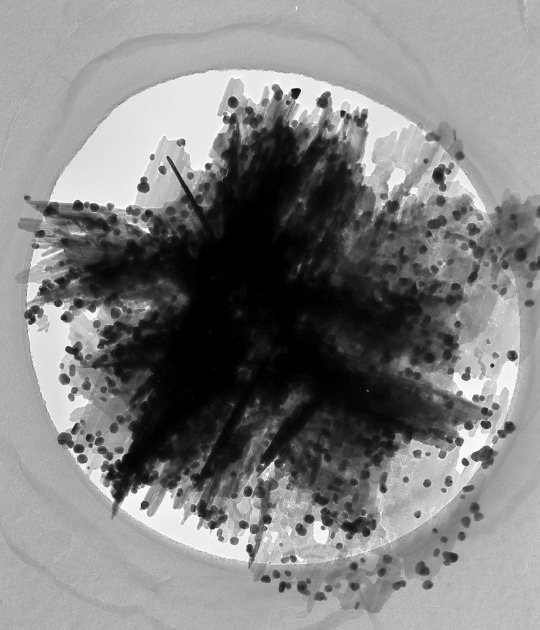



#electron microscopy#transmission electron microscopy#nanoparticles#rare earth hydroxides#zinc tungstate#silver on zinc oxide#zinc titanate#original content
6 notes
·
View notes
Text
youtube
What is Cryogenic Transmission Electron Microscopy or Cryo-TEM?. This is an introductory lecture about Cryogenic Transmission Electron Microscopy (Cryo-TEM) to the interdisciplinary audience. Topics including, conventional TEM imaging, negative staining, supercritical drying, and single particle reconstruction are covered in this lecture.
#microscope#microscopy#image#nano#nanoparticles#nanotechnology#virus#3dimages#electronmicroscope#electronmicroscopy#colloids#negative staining#vitrification#transmission#protein#biomolecule#biomolecules#electronbeam#chemistry#structure#vaccines#vaccine#cell#biology#structuralengineering#structuralanalysis#crystals#crystallography#hydrogenbond#supercriticaldrying
3 notes
·
View notes
Link
Glioblastoma is one of the most deadly forms of cancer, often returning with a vengeance after surgery to remove it. Researchers at the University of Wisconsin-Madison have now developed an immunity-boosting hydrogel that can be injected into the brain after surgery to clear out remaining cancer stem cells. The survival rates for glioblastoma are among the lowest of any cancer, with less than 5% of patients surviving five years after diagnosis. That’s largely because this brain cancer has a tendency to come back after the tumor is surgically removed, as glioma stem cells are left behind to form new tumors. “One characteristic of glioblastoma is that the tumor cells are very aggressive, and they will infiltrate the surrounding tissues,” said Quanyin Hu, corresponding author of the study. “So the surgeon can’t clearly feel the boundaries between the tumor and the normal tissue, and you cannot remove as much as possible because all the tissues in the brain are extremely important – you certainly don’t want to remove too much.” But a new treatment might help turn the tide. The researchers have now developed a drug-laden hydrogel that can be injected post-operation into the space left behind after a tumor is removed. There, it gets to work training the immune system to hunt down any remaining glioma stem cells. The hydrogel contains nanoparticles that can reprogram immune cells called macrophages, which flood the site after the surgery. Frustratingly, the tumor environment can make these macrophages switch sides, so they help promote cancer growth and suppress the immune response.
13 notes
·
View notes
Text
Imperial Lates
Upon experiencing my first Imperial late event, here are a few things that I learnt:
- My first lecture focused on precision polymer particles by Professor Rachel O’riley. Although typically such nanoparticles are governed by the ratio of hydrophobic and hydrophilic components for self assembly, here; the focus was on crystallisation driven self assembly (CDSA) which overrides this mechanism. DMA seeds are used as the original seeds on which the polymer begins to form through a process known as living polymerisation growth for greater control that leads to platelet like structures. Studying the complexity of assembly was important on exploring how polymer length, composition and chemistry can be altered to rationally tune nanoparticle shape and in turn it’s properties. Novel applications include directing biological interactions, such as cellular uptake, intracellular trafficking and immune response or the ability to modulate hydrogel mechanical and adhesion properties when used as fillers for antimicrobial and tissue engineering purposes.
- The second talk event was lead by Dr Catherine Kibirige on treating HIV in rural African communities. HIV is particularly difficult to treat and has to be rather suppressed because of it’s elusion from the immune system. Using a continually shifting shield of glycans, it prevent antibodies from detecting and attacking. It also replicates rapidly using reverse transcriptase to develop a pool of diverse HIV strains - called quasi-species - whilst attacking helper T-cells that orchestrate the immune system’s cell signalling. Finally it has a long incubation period and is slow to reveal (typically 5-10 years), where by that point it may have shredded the victims immune system. There are campaigns that have been developed, notably the ongoing UN led campaign of 95-95-95; where 95% people with HIV know their status, then 95% are receiving their treatment and 95% have suppressed their viral load by 2030. Suppression is the best we have at the current moment with no vaccine, with the Undetectable= Untransmittable campaign (U=U), sexual transmissions of HIV can be stopped by lowering the viral load in blood whilst on effective treatment. Dr Kibirige has been a part of the HIVQuant project that is a HIV-1 kit (working on portable solar or battery driven cyclers) that provides a treatment monitoring solution for resource-constrained settings, especially in Africa to minimise monthly hourly trips to district hospitals to meet the 2030 95-95-95 UN target.
- Vera. AI was the final project that grasped my attention as AI is largely underrepresented in the field of healthcare. Being a hyper-personalised digital platform that focuses on gynaecological, hormonal health management and patient education, this AI tools aims to break women’s health taboos in communicating their medical needs. Focusing on improving patient’s ability to understand and learn, Vera.AI improves patient-doctor communication. This is a project still in it’s early stages but with incorporating ChatGPT in the future, it has colossal potential to democratise women’s health medical data.
#medicine#drugs#drug experiments#imperial college london#AI#HIV#chatgpt#nanoparticles#polymers#self help#university#u=u#95-95-95#united nations#immune system#Imperial lates#learning#womens health
5 notes
·
View notes
Text
👹👽☠️
30 notes
·
View notes
Text
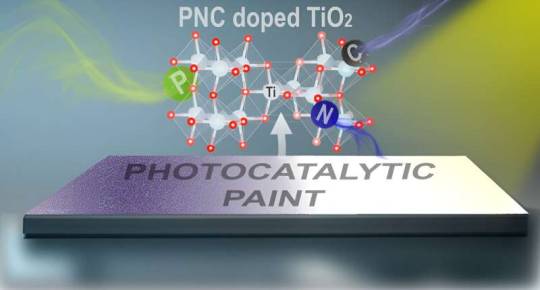
Catalysis breakthrough yields self-cleaning wall paint that breaks down air pollutants when exposed to sunlight
Typically, beautiful white wall paint does not stay beautiful and white forever. Often, substances from the air accumulate on its surface. This can be a desired effect because it makes the air cleaner for a while—but over time, the color changes and needs to be renewed.
A research team from TU Wien and the Università Politecnica delle Marche (Italy) has now succeeded in developing special titanium oxide nanoparticles that can be added to ordinary, commercially available wall paint to establish self-cleaning power: The nanoparticles are photocatalytically active, they can use sunlight not only to bind substances from the air, but also to decompose them afterwards.
The wall makes the air cleaner—and cleans itself at the same time. Waste was used as the raw material for the new wall paint: metal scrap, which would otherwise have to be discarded, and dried fallen leaves. The study is published in ACS Catalysis.
Read more.
#Materials Science#Science#Catalysts#Paint#Self cleaning#Pollutants#TU Wien#Nanoparticles#Nanotechnology#Titanium dioxide
19 notes
·
View notes
Text

Glowing Report
Nanoparticles with certain special properties are capable of adjustable persistent luminescence [light-emission] when excited by X-rays, giving them potential applications such as in biomedical imaging. By creating a new nanostructure with such particles, this study overcomes the need for very high dose X-rays to achieve the desired properties
Read the published research article here
Image from work by Lei Lei and Minghao Yi, and colleagues
Key Laboratory of Rare Earth Optoelectronic Materials and Devices of Zhejiang Province, Institute of Optoelectronic Materials and Devices, China Jiliang University, Hangzhou, China
Image originally published with a Creative Commons Attribution 4.0 International (CC BY 4.0)
Published in Nature Communications, February 2024
You can also follow BPoD on Instagram, Twitter and Facebook
8 notes
·
View notes
Link
28 notes
·
View notes
Text
Bottled Water: A Trojan Horse for Hidden Plastic Particles
About 90% of these plastic fragments were nanoplastics.
When you reach for that convenient bottle of water, you’re expecting a pure, refreshing beverage. But what you might not know is that your thirst-quencher may be carrying some unwanted stowaways: plastic particles. Bottled water contains hundreds of thousands of tiny plastic nanoparticles. These stealthy intruders, invisible to the naked eye, could potentially have detrimental health effects and…

View On WordPress
0 notes
Text
'Plug-and-Play' Nanoparticles Could Make it Easier to Tackle Various Biological Targets - Technology Org
New Post has been published on https://thedigitalinsider.com/plug-and-play-nanoparticles-could-make-it-easier-to-tackle-various-biological-targets-technology-org/
'Plug-and-Play' Nanoparticles Could Make it Easier to Tackle Various Biological Targets - Technology Org
Researchers at UC San Diego have developed modular nanoparticles that can be customized to target biological entities such as tumors, viruses or toxins.
The surfaces of the nanoparticles are engineered to host biological molecules, making it possible to tailor the nanoparticles for applications from targeted drug delivery to neutralizing biological agents.
Live cell fluorescent visualization of biological molecules binding to the surface of genetically modified cell membranes, which make up the coating for the modular nanoparticles. Image credit: Zhang lab/UC San Diego Jacobs School of Engineering
Scientists say the beauty of the technology lies in its simplicity and efficiency. Researchers can use a modular nanoparticle base to attach proteins targeting a desired biological entity rather than crafting new nanoparticles for each specific application.
In the past, creating nanoparticles for different biological targets required going through a distinct synthetic process from start to finish each time. But with this new technique, the same modular nanoparticle base can be modified to create a set of specialized nanoparticles.
“This is a plug-and-play platform technology that allows for rapid modification of a functional biological nanoparticle,” said Liangfang Zhang, a nanoengineer at UC San Diego.
Zhang and his team detail their work in a U.S. National Science Foundation-supported paper published in Nature Nanotechnology.
The modular nanoparticles consist of biodegradable polymer cores coated with genetically modified cell membranes. The key to the design is a pair of synthetic proteins, known as SpyCatcher and SpyTag, that are designed to spontaneously — and exclusively — bind with each other. This pair is commonly used in biological research to combine various proteins. In this study, Zhang and his team harnessed the pair to create a system for attaching proteins to a nanoparticle surface with ease.
Here’s how it works: SpyCatcher is embedded onto the nanoparticle surface, while SpyTag is chemically linked to a protein, such as one targeting tumors or viruses. When SpyTag-linked proteins encounter SpyCatcher-decorated nanoparticles, they bind to each other, enabling proteins of interest to attach to nanoparticle surfaces.
For example, to target tumors, SpyTag can be linked to a protein designed to seek out tumor cells. That SpyTag-linked protein is then attached to the nanoparticle. If the target shifts to a specific virus, the process is similar: Link SpyTag to a protein targeting the virus and attach it to the nanoparticle surface.
“It’s a streamlined and straightforward approach to functionalizing nanoparticles for any biological application,” said Zhang. The researchers are looking to further improve the modular nanoparticle platform for targeted drug delivery.
Source: NSF
You can offer your link to a page which is relevant to the topic of this post.
#applications#approach#biodegradable#Biotechnology news#cell#Cells#Design#drug#drug delivery#efficiency#engineering#Featured life sciences news#Foundation#how#it#Link#membranes#modular#molecules#Nanoparticles#Nanotechnology#Nanotechnology news#nature#One#Other#paper#Play#process#proteins#Research
0 notes